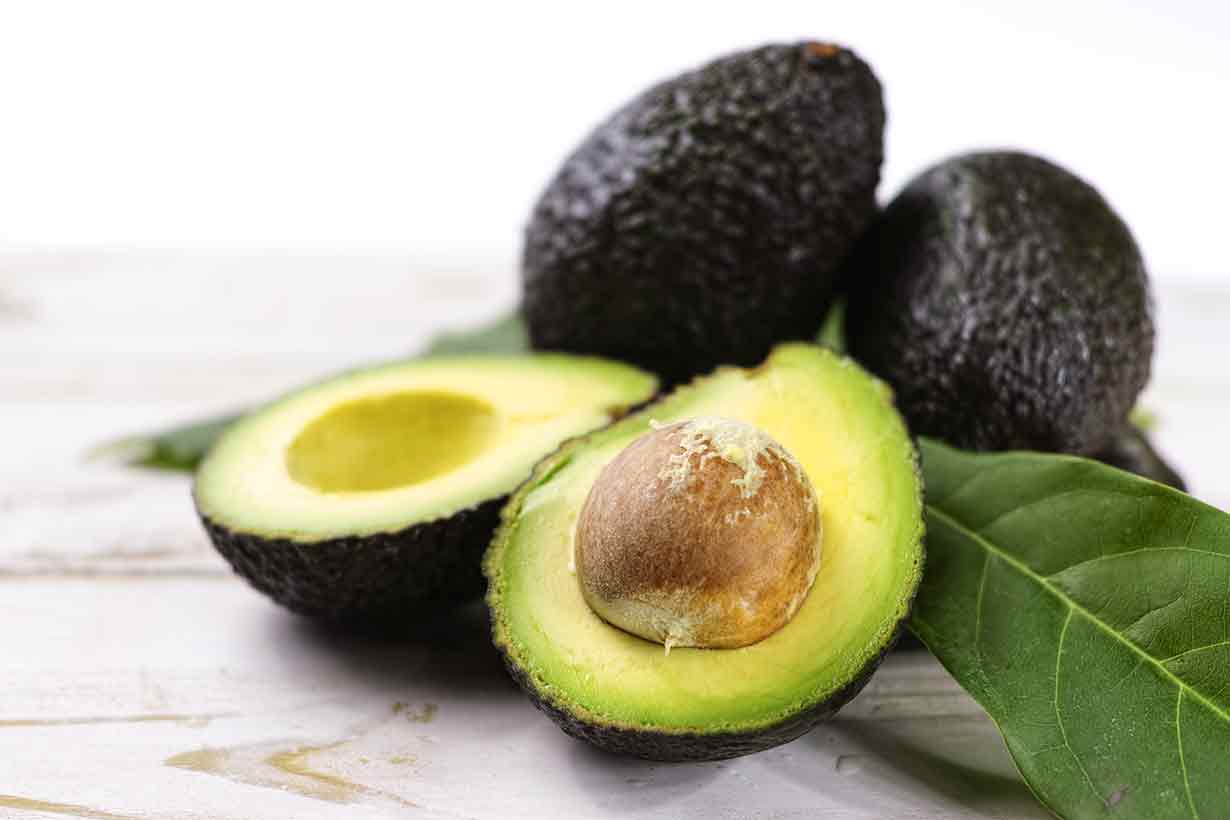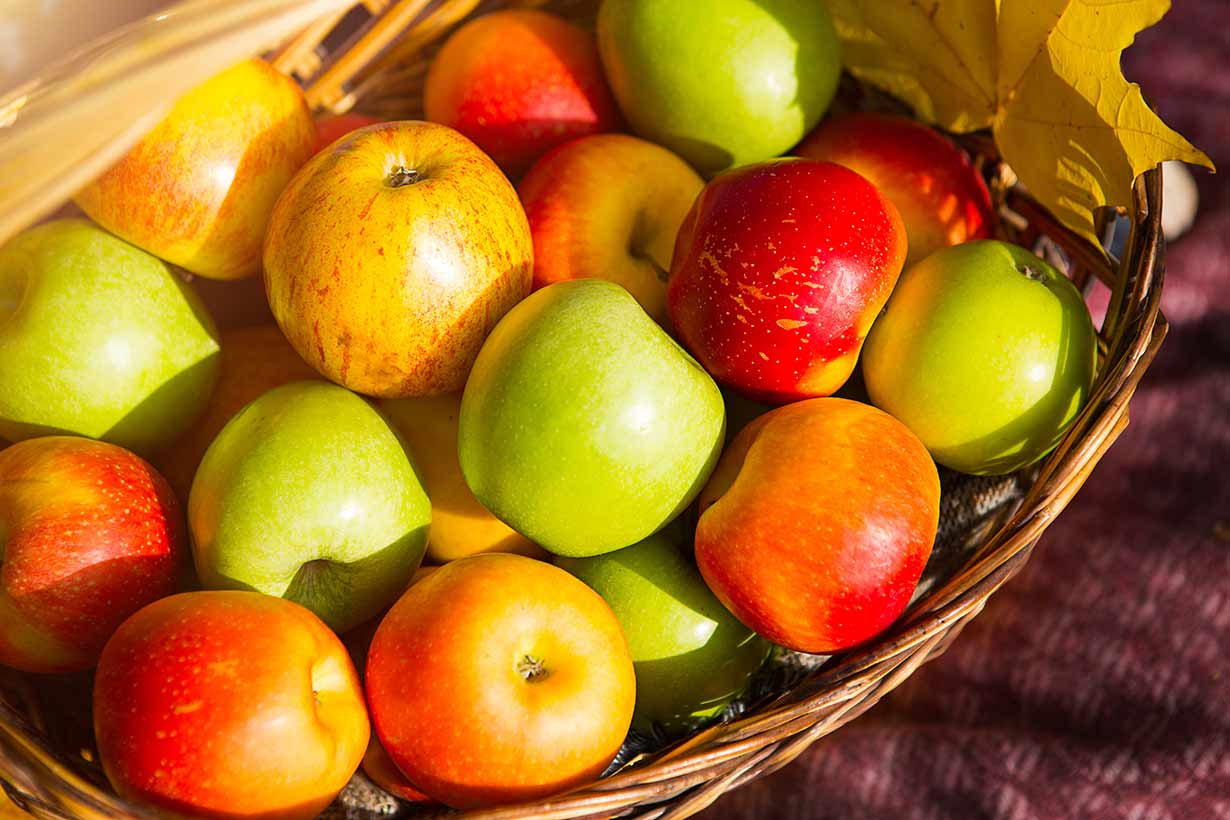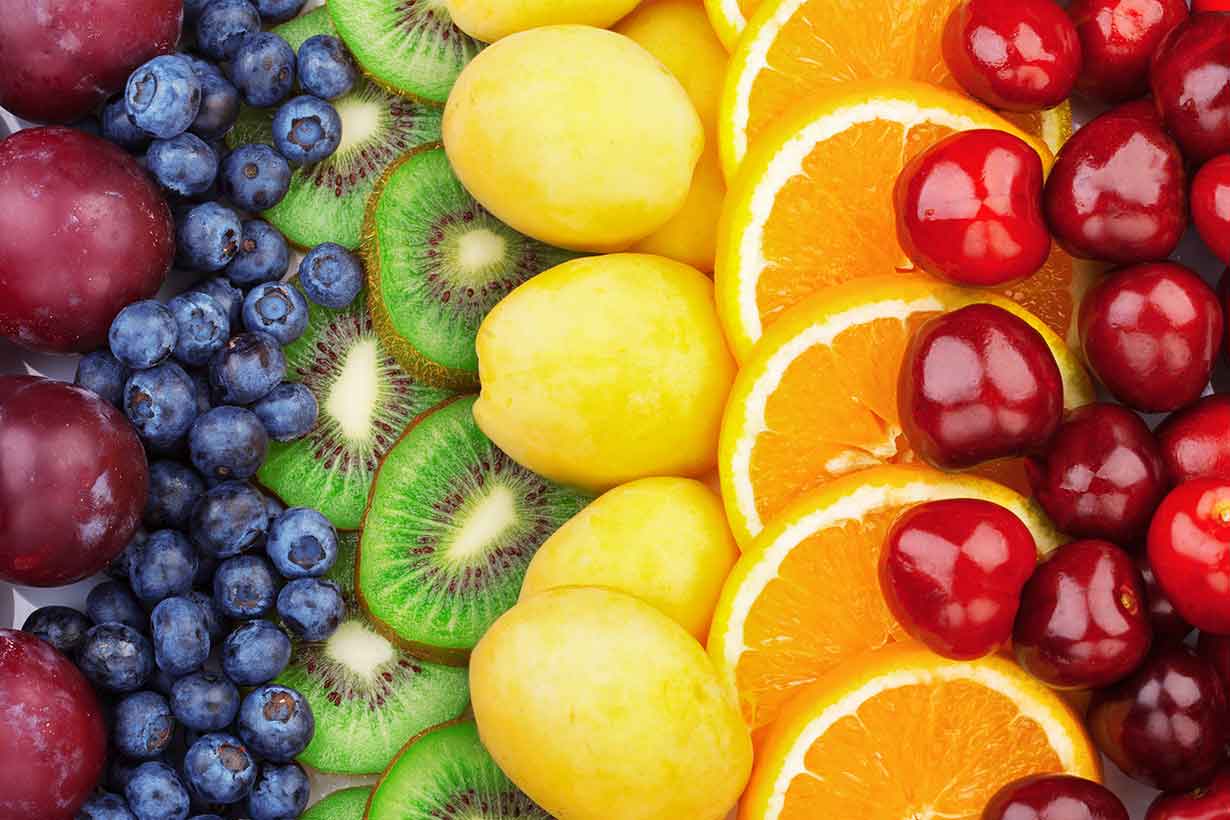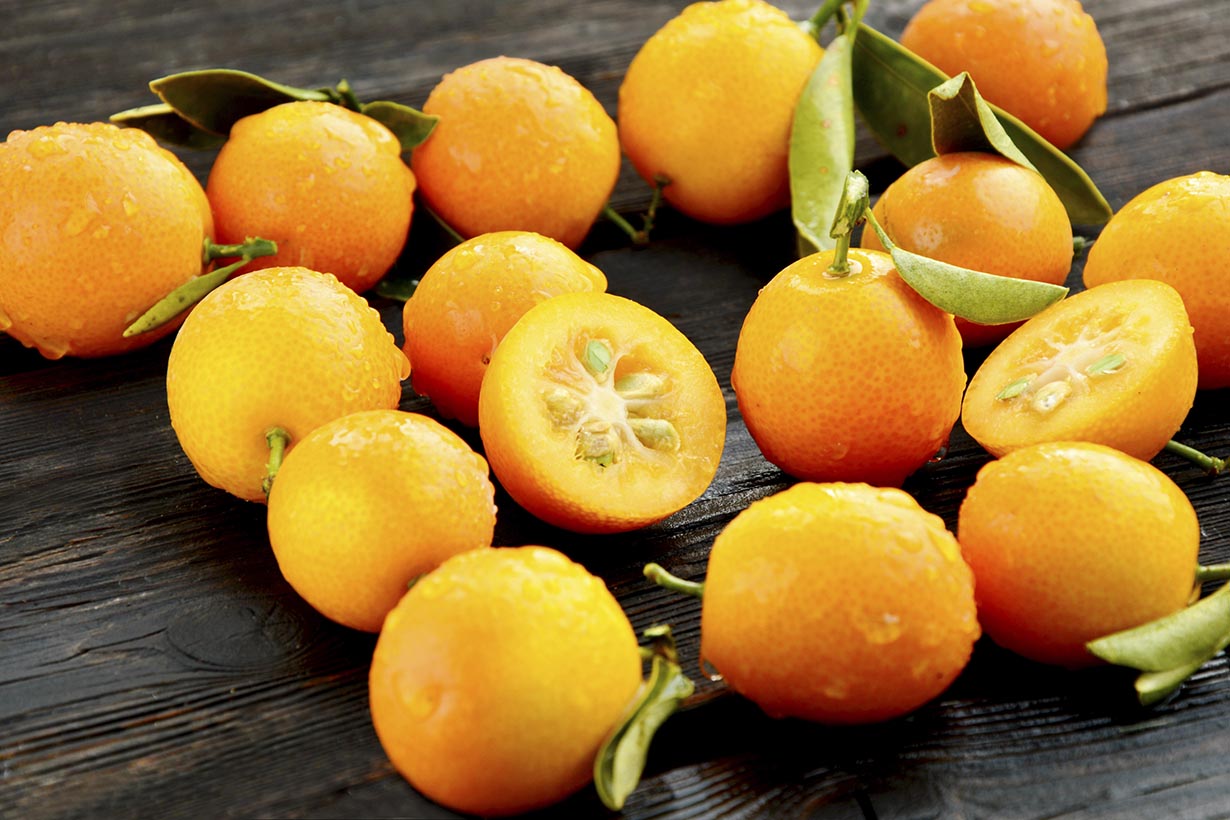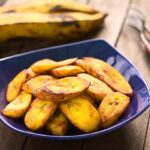There are many red fruit varieties, each with a varying shade of red.
However, what imparts this red hue to these fruits, and do they provide any unique nutritional benefits?
This article provides a guide to red fruits and their nutritional benefits and takes a closer look at 15 varieties of red fruit.
Table of contents
What Gives Red Fruits Their Color?
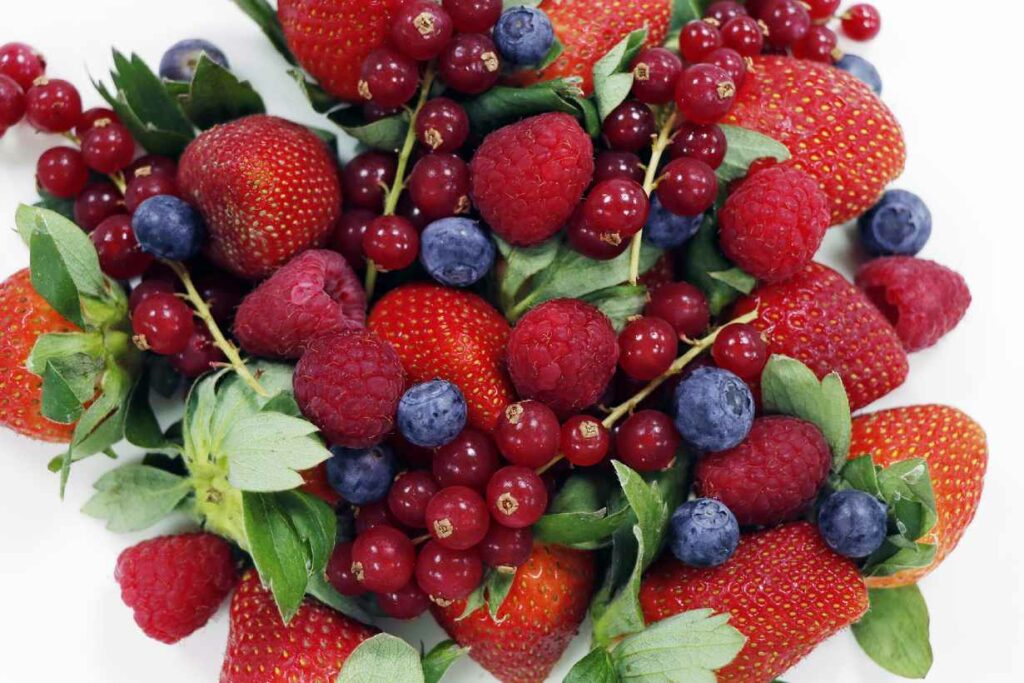
Certain fruits exhibit red flesh, while others have flesh of diverse colors encased within a red outer skin or peel.
In the context of this article, fruits with either of these characteristics will be categorized as red fruits. The red color of these fruits comes from the distinct phytochemicals present within them.
Phytochemicals are bioactive compounds naturally found in plants, capable of exerting beneficial effects upon the human body. These compounds are responsible for the color shades of different foods (1). Some examples of phytochemicals include carotenoids present in carrots and flavonoid polyphenols in foods like cocoa powder (2, 3).
The distinctive red hue seen in various fruits comes primarily from a group of phytochemicals called anthocyanins. However, other compounds, including betalains and carotenoids such as lycopene, can also contribute (4).
Do Red Fruits Have Unique Benefits?
Firstly, every red fruit boasts its distinct nutritional composition and may offer more essential nutrients than others. In simpler terms, not all red fruits are equally nutritious, and their fiber, vitamin, and mineral content diverge based on the specific fruit.
However, focusing on their phytochemical content, anthocyanin-containing red fruits may provide unique benefits compared to fruits lacking these compounds.
For instance, systematic reviews of existing research have demonstrated that anthocyanins may potentially improve exercise recovery, promote gastrointestinal health, and reduce inflammation levels (5, 6, 7).
That said, it’s worth noting that the anthocyanin content of red fruit isn’t an exclusive trait. In this regard, anthocyanins can also be found in fruits with blue and dark purple pigments, such as blueberries and blackberries.
It is a similar scenario with betalains and carotenoids; they may have benefits, yet these compounds are not exclusive to red-pigmented fruits. For instance, carotenoids are present in yellow fruits.
Most red fruits also provide a good source of vitamin C. However, this is not a unique benefit, and the vitamin is found in fruits of a variety of colors.
A List of Red Fruits
Here is a list of red fruit options alongside some basic details about them.
All the provided percent daily values (% DV) were calculated utilizing data from the USDA FoodData Central database and the FDA’s published daily values.
1) Blood Orange
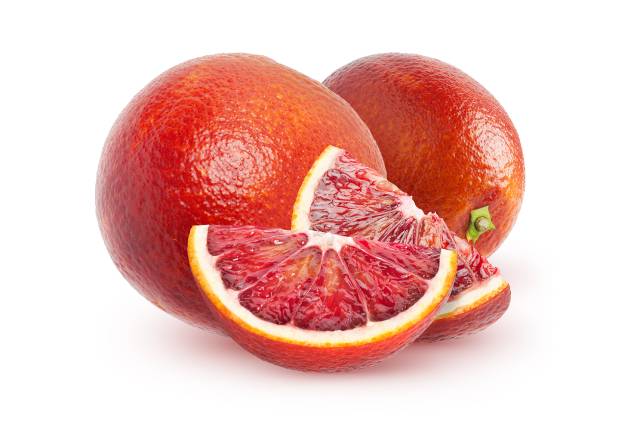
Blood oranges, a distinct orange variety, boast a blood-red flesh.
This deep red hue of the flesh is attributed to its elevated anthocyanin content. Among the anthocyanins found in blood oranges are cyanidins like cyanidin 3-glucoside, along with malonated anthocyanins (8, 9, 10).
Notably, blood oranges offer substantial quantities of vitamin C (11).
Key facts (per 148-gram blood orange)
- Calories: 70 kcal
- Carbohydrates: 15.0 g
- Fiber: 2.64 g
- Sugars: 12.35 g
- Fat: 1.0 g
- Protein: 1.0 g
- Key nutrients: Vitamin C (73% DV), vitamin A (13% DV)
Source: 10 Types of Oranges and Their Nutrition Facts
2) Boysenberry
Boysenberries, characterized by their larger size compared to raspberries, are red berries known for their deep red hue.
Like other red berries, boysenberries acquire their deep red color from their considerable anthocyanidin content (12).
From a nutritional perspective, boysenberries are an excellent source of vitamin C and manganese.
Key facts (per 144-gram cup)
- Calories: 62 kcal
- Carbohydrates: 13.84 g
- Fiber: 7.63 g
- Sugars: 7.03 g
- Fat: 0.71 g
- Protein: 2.0 g
- Key nutrients: Vitamin C (34% DV), manganese (40% DV)
Source: NCC Food and Nutrient Database
3) Cherry
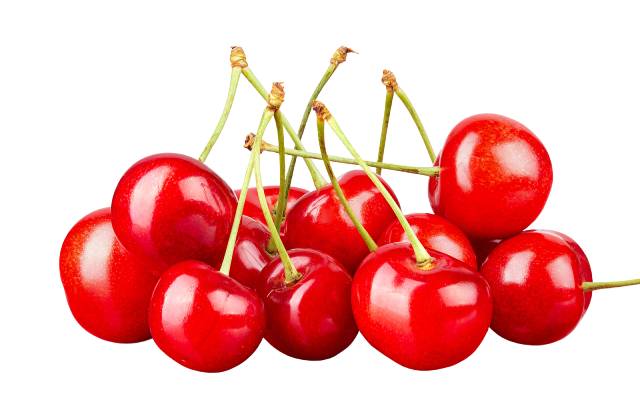
Cherries rank among the most popular fruit choices, displaying a spectrum of pigments from bright red to dark red.
The cherry gets this characteristic red color from anthocyanins, encompassing cyanidin, delphinidin, pelargonidin, and peonidin (13).
Within cherries, the predominant micronutrients include vitamin C and copper (14).
Key facts (per 150-gram cup)
- Calories: 95 kcal
- Carbohydrates: 24.0 g
- Fiber: 3.15 g
- Sugars: 19.2 g
- Fat: 0.3 g
- Protein: 1.59 g
- Key nutrients: Vitamin C (12% DV), copper (10% DV)
4) Cranberry
Cranberries are tart little red berries that appear in an array of products such as jams and juices.
Their crimson-red hue comes from their anthocyanins, which include cyanidin, delphinidin, and peonidin (15).
As well as being a good source of fiber, cranberries also offer noteworthy levels of vitamin C and manganese (16).
Key facts (per 110-gram cup)
- Calories: 51 kcal
- Carbohydrates: 13.2 g
- Fiber: 3.96 g
- Sugars: 4.7 g
- Fat: 0.14 g
- Protein: 0.51 g
- Key nutrients: Vitamin C (17% DV), manganese (13% DV)
5) Dragon Fruit
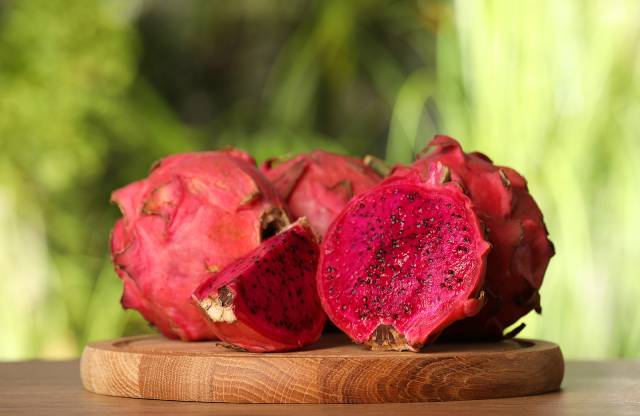
Dragon fruits come in various varieties, but not all of them have red flesh.
However, there exist red-fleshed dragon fruits, also known as red-fleshed pitaya (17). Additionally, it’s worth noting that all dragon fruits sport a pink-to-red skin color.
The vivid red hue of dragon fruit comes from its high levels of betalains (18).
Betalains are also present in beets, and a review from 2021 revealed their potential for significant anti-inflammatory activity (19).
Dragon fruit offers a good source of both vitamins C and K (20).
Key facts (per 180-gram cup)
- Calories: 122 kcal
- Carbohydrates: 29.2 g
- Fiber: 3.24 g
- Sugars: 21.6 g
- Fat: 0.38 g
- Protein: 1.22 g
- Micronutrients: Vitamin C (40% DV)
Learn more: A comprehensive guide to dragon fruit
6) Guava
Guava is a tropical fruit boasting a juicy, refreshing, and sweet flavor profile.
Some guava varieties, known as “red guavas,” exhibit a hue ranging from dark pink to light red when ripe. Their red-hued flesh comes from the presence of anthocyanins and carotenoids within the fruit (21).
Among its nutritional profile, guava is one of the foremost dietary sources of vitamin C (22).
Key facts (per 55-gram fruit)
- Calories: 37 kcal
- Carbohydrates: 7.86 g
- Fiber: 2.97 g
- Sugars: 4.91 g
- Fat: 0.52 g
- Protein: 1.4 g
- Key nutrients: Vitamin C (139% DV)
7) Mulberry
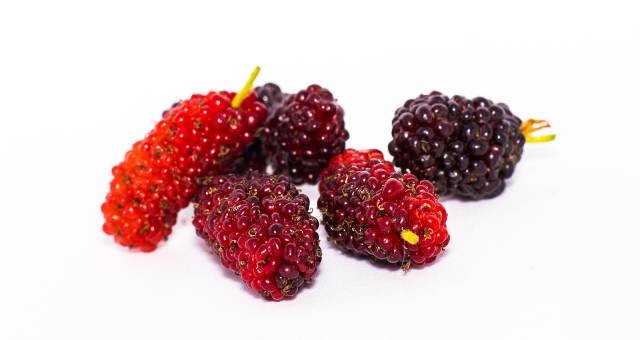
Mulberry fruit comes in several distinct shades, spanning from red to black and even white (23).
Presenting a combination of sweet and tart flavor notes, red mulberries are an enjoyable and flavorful fruit.
The red pigmentation of red mulberries owes its existence to their anthocyanin content, specifically cyanidin 3-glucoside and cyanidin 3-rutinoside (24).
Nutritionally, red mulberries provide noteworthy quantities of both vitamin C and iron (25).
Key facts (per 140-gram cup)
- Calories: 60 kcal
- Carbohydrates: 13.7 g
- Fiber: 2.38 g
- Sugars: 11.3 g
- Fat: 0.55 g
- Protein: 2.02 g
- Key nutrients: Vitamin C (57% DV), iron (14%)
8) Passion fruit
Although passion fruit lacks red flesh, specific varieties of this fruit have a deep red skin tone.
While this red-hued passion fruit is less prevalent compared to the purple variety, its vibrant color comes from its combination of anthocyanins and carotenoids (26, 27).
Vitamin C is the primary micronutrient provided by passion fruit (28).
Key facts (per 18-gram fruit)
- Calories: 18 kcal
- Carbohydrates: 4.21 g
- Fiber: 1.87 g
- Sugars: 2.02 g
- Fat: 0.13 g
- Protein: 0.40 g
- Key nutrients: Vitamin C (6% DV)
9) Pomegranate
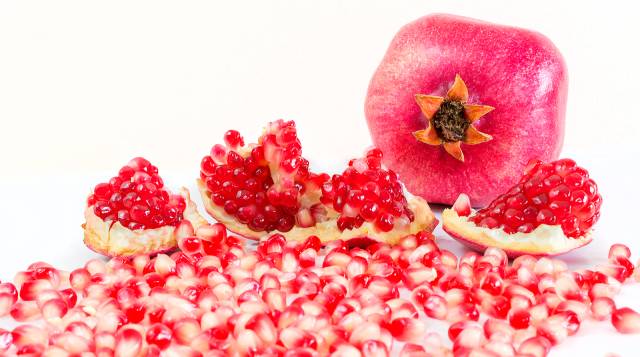
Pomegranates are visually appealing fruits characterized by a red outer skin that surrounds lots of small red edible seeds. The fruit is equal parts sweet and tart and delivers a pleasant flavor.
The seeds of the pomegranate, known as arils, boast a red hue courtesy of their significant anthocyanin content. This range of anthocyanins includes cyanidin, delphinidin, and pelargonidin (29, 30).
Pomegranate is a rich source of numerous vitamins and minerals, but it offers notable levels of vitamins B1, C, and K, along with folate and copper (31).
Key facts (per 282-gram fruit)
- Calories: 234 kcal
- Carbohydrates: 52.7 g
- Fiber: 11.3 g
- Sugars: 38.6 g
- Fat: 3.3 g
- Protein: 4.71 g
- Key nutrients: Copper (50% DV), folate (27% DV), thiamin (16% DV), vitamin C (32% DV), vitamin K (39% DV)
Source: USDA FoodData Central Database
10) Rambutan
Ripe rambutan exhibits a red skin covered in hair-like spikes, often tinged in green. While this tough exterior is red, rambutan has a pale white inner flesh.
The red pigment of rambutan’s skin comes from its anthocyanin content, encompassing cyanidin, delphinidin, pelargonidin, and peonidin (32).
In terms of nutritional value, rambutan offers a commendable dose of vitamin C and pantothenic acid.
Key facts (per 100-gram serving)
- Calories: 75 kcal
- Carbohydrates: 18.5 g
- Fiber: 2.80 g
- Sugars: 15.70 g
- Fat: 0.40 g
- Protein: 1.0 g
- Key nutrients: Vitamin C (78% DV), pantothenic acid (20%)
Source: Cronometer Community Database
11) Raspberry
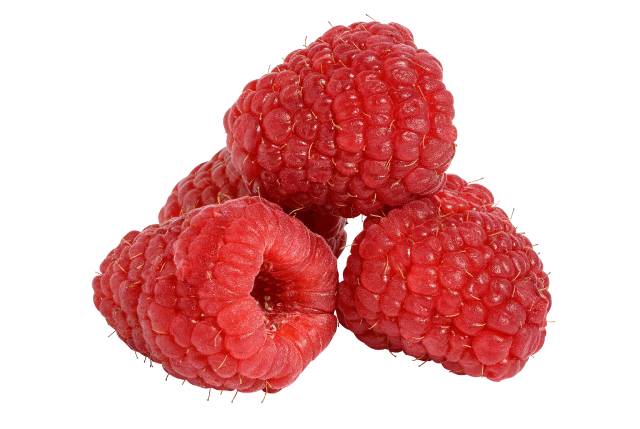
Raspberries are one of the most renowned red fruits, offering a pleasant taste, aroma, and a wealth of nutrients.
Much like other red berries, raspberries draw their vibrant red hue from the wealth of anthocyanins they contain. The primary anthocyanins include cyanidin 3-sophoroside and cyanidin 3-glucoside (33, 34).
From a nutritional standpoint, raspberries are an excellent source of vitamin C and manganese (35).
Key facts (per 123-gram cup)
- Calories: 64 kcal
- Carbohydrates: 14.6 g
- Fiber: 8.0 g
- Sugars: 5.44 g
- Fat: 0.80 g
- Protein: 1.48 g
- Key nutrients: Vitamin C (36% DV), manganese (36%)
12) Red banana
Red bananas resemble regular bananas internally, but they have a red rather than yellow peel.
Their general nutritional composition is largely the same, and the main differences lie in the pigment content of their respective skins.
In this context, the skin of red bananas is a significant source of anthocyanins, encompassing cyanidin, malvidin, peonidin, and petunidin (36).
While renowned for their potassium content, bananas offer a proportionately higher share of the recommended amounts of vitamin B6 and the mineral manganese (37).
Key facts (per 118-gram medium banana)
- Calories: 105 kcal
- Carbohydrates: 26.9 g
- Fiber: 3.07 g
- Sugars: 14.4 g
- Fat: 0.39 g
- Protein: 1.29 g
- Key nutrients: Vitamin B6 (25% DV), manganese (14%)
13) Red Delicious apple
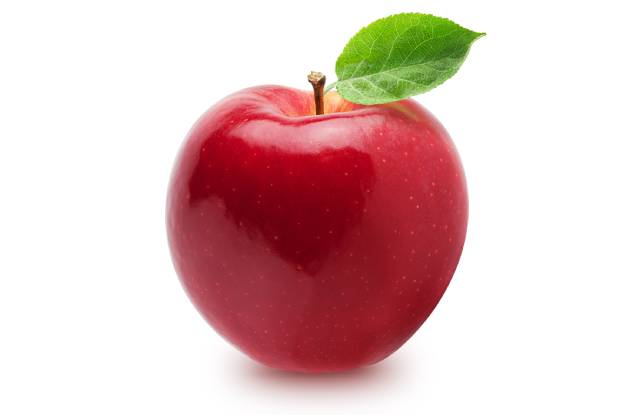
The Red Delicious is a popular variety of apple characterized by its shiny, deep-red skin.
The distinctive color of the Red Delicious apple is attributed to its significant anthocyanin content. Among these anthocyanins, the primary pigment found in Red Delicious apples is cyanidin 3-galactoside. The apples also house cyanidin 3-arabinoside and cyanidin 7-arabinoside (38).
In terms of their nutritional profile, Red Delicious apples present a moderate supply of both potassium and vitamin K (39).
Key facts (per 212-gram medium apple)
- Calories: 125 kcal
- Carbohydrates: 29.9 g
- Fiber: 4.88 g
- Sugars: 22.3 g
- Fat: 0.42 g
- Protein: 0.57 g
- Key nutrients: Potassium (5% DV), vitamin K (5%)
14) Strawberry
Strawberries rank among the most popular fruits, delivering a sweet taste and aroma.
The strawberry’s distinct bright red hue comes from its anthocyanin content, primarily in the form of pelargonidin and cyanidin glycosides (40, 41).
Nutritionally, strawberries provide a notable quantity of vitamin C, and they’re a commendable source of manganese (42).
Key facts (per 144-gram cup)
- Calories: 46 kcal
- Carbohydrates: 11.1 g
- Fiber: 2.88 g
- Sugars: 7.04 g
- Fat: 0.43 g
- Protein: 0.97 g
- Key nutrients: Vitamin C (94% DV), manganese (5%)
15) Watermelon
Watermelon is a refreshing variety of melon with a thick green exterior concealing its inner red flesh. Impressively, it boasts a high water content of approximately 91% (43).
The carotenoid pigment lycopene is behind the distinctive red flesh of watermelon (44).
Notably, lycopene has antioxidant properties, and it is believed to hold potential health benefits. On this note, systematic reviews exploring the evidence on lycopene suggest that it may have a protective effect against metabolic syndrome and potentially moderate fasting blood glucose (45, 46).
Nutritionally, watermelon presents a noteworthy supply of both vitamin C and potassium (47).
Key facts (per 286-gram wedge)
- Calories: 86 kcal
- Carbohydrates: 21.6 g
- Fiber: 1.14 g
- Sugars: 17.7 g
- Fat: 0.43 g
- Protein: 1.74 g
- Key nutrients: Vitamin C (26% DV), potassium (7%)
Commonly Asked Questions About Red Fruits
Lastly, here are some answers to common questions people may have about red fruits.
Red fruits are not always “high” in vitamin C, but they usually provide at least a moderate amount of the vitamin. Among the various red fruit varieties, blood oranges, guava, mulberries, and strawberries have the highest vitamin C content.
The cornerstone of weight management is the overall dietary pattern. Fruit can provide fiber and be relatively satiating. In this sense, substituting a typical “cookie” or “cake” snack with a piece of fruit could contribute to weight loss efforts. However, the overall diet is what matters most.
Yes, red fruits encompass several nutrients and pigments that exert antioxidant activity. These include anthocyanins, lycopene, and vitamin C.
Red fruits with the least sugar (and lower overall carbohydrate content) tend to be berries. These lower-sugar options include boysenberries, cranberries, mulberries, raspberries, and strawberries.


